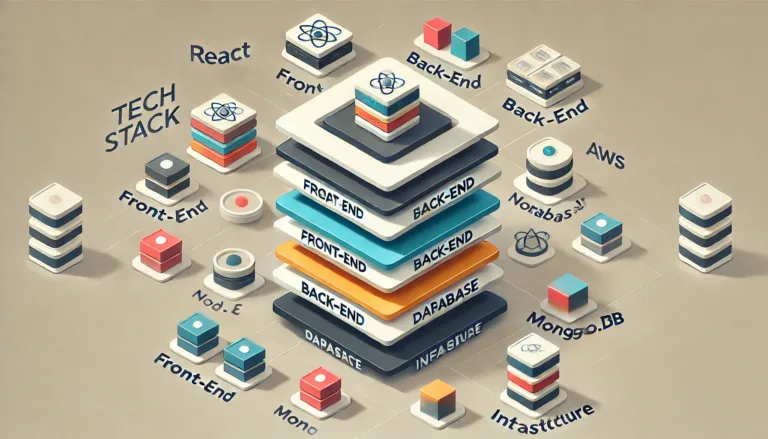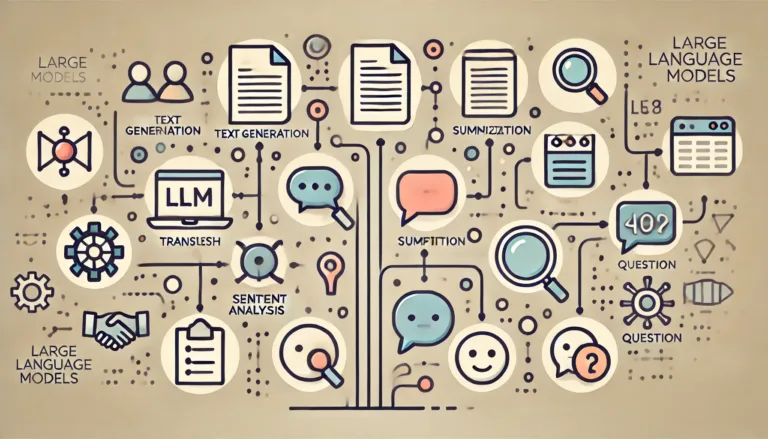Introduction
As we face the challenges of climate change and environmental degradation, AI offers powerful tools to help us protect and preserve our planet. From predicting natural disasters to optimizing renewable energy, AI is at the forefront of environmental innovation. If you’re passionate about sustainability and want to use technology to make a difference, this article will introduce you to 32 AI project ideas that can contribute to a healthier, more sustainable world.
Beginner-Level AI Projects in Environment and Sustainability
These beginner-level projects are perfect for those starting out with AI in environmental sustainability, offering a solid foundation in understanding how AI can be applied to protect our planet.
1. AI for Climate Modeling
- Objective: Develop AI models that predict climate changes using historical weather data and climate simulations.
- Tools and Technologies: Python, TensorFlow, climate data repositories.
- Learning Outcomes: Learn how to build predictive models that forecast climate trends, helping in policy formulation and climate action.
2. Wildlife Conservation Using AI
- Objective: Create AI tools that monitor and protect endangered species by analyzing data from cameras, drones, and tracking devices.
- Tools and Technologies: Python, computer vision, machine learning.
- Learning Outcomes: Explore how AI can be used to track animal movements and identify poaching activities, contributing to wildlife conservation.
3. AI-Powered Environmental Monitoring
- Objective: Use AI to analyze data from environmental sensors that monitor air quality, water levels, and soil health.
- Tools and Technologies: Python, IoT devices, data analytics.
- Learning Outcomes: Understand how AI can process large amounts of environmental data in real-time to detect pollution and environmental changes.
4. AI for Sustainable Agriculture
- Objective: Develop AI systems that optimize farming practices, such as crop rotation, irrigation, and pest control.
- Tools and Technologies: Python, machine learning, agricultural datasets.
- Learning Outcomes: Learn how AI can increase crop yields, reduce resource usage, and promote sustainable farming techniques.
5. Predicting Natural Disasters
- Objective: Build AI models that predict natural disasters like earthquakes, floods, and hurricanes using historical and real-time data.
- Tools and Technologies: Python, TensorFlow, geospatial data analysis.
- Learning Outcomes: Explore how AI can provide early warnings for natural disasters, potentially saving lives and reducing economic damage.
6. AI for Renewable Energy Optimization
- Objective: Create systems that improve the efficiency of renewable energy sources, such as solar and wind power.
- Tools and Technologies: Python, energy simulation tools, machine learning.
- Learning Outcomes: Understand how AI can optimize energy production and storage, making renewable energy more reliable and cost-effective.
Intermediate-Level AI Projects in Environment and Sustainability
These intermediate projects involve more complex applications of AI, requiring a deeper understanding of both environmental science and AI technologies.
7. AI in Water Management
- Objective: Use AI to optimize water distribution and reduce wastage by analyzing consumption patterns and detecting leaks.
- Tools and Technologies: Python, machine learning, IoT sensors.
- Learning Outcomes: Learn how AI can help in the efficient management of water resources, crucial for regions facing water scarcity.
8. AI for Pollution Control
- Objective: Develop AI tools to monitor and reduce pollution by analyzing emissions data and predicting pollution levels.
- Tools and Technologies: Python, data analytics, machine learning.
- Learning Outcomes: Understand how AI can contribute to cleaner air and water by enabling more effective pollution control measures.
9. AI-Powered Recycling Systems
- Objective: Build systems that automate the sorting and recycling of waste using AI and robotics.
- Tools and Technologies: Python, computer vision, robotics.
- Learning Outcomes: Explore how AI can improve recycling efficiency, reducing the amount of waste sent to landfills.
10. Forest Fire Detection Using AI
- Objective: Develop AI systems that detect and prevent forest fires by analyzing satellite images and environmental data.
- Tools and Technologies: Python, satellite data, machine learning.
- Learning Outcomes: Learn how AI can be used for early detection of forest fires, enabling quicker responses and reducing damage.
11. AI in Smart Grid Management
- Objective: Optimize electricity grids using AI to balance supply and demand, integrate renewable energy, and reduce outages.
- Tools and Technologies: Python, machine learning, energy management systems.
- Learning Outcomes: Understand how AI can contribute to more efficient and resilient power grids, essential for modern energy infrastructure.
12. AI for Sustainable Urban Planning
- Objective: Create models that support sustainable city development by optimizing land use, transportation, and resource allocation.
- Tools and Technologies: Python, GIS tools, urban planning data.
- Learning Outcomes: Explore how AI can help in designing cities that are more sustainable, livable, and resilient to climate change.
13. AI in Marine Conservation
- Objective: Develop tools that protect and monitor marine ecosystems by analyzing data from underwater sensors and satellite images.
- Tools and Technologies: Python, machine learning, remote sensing.
- Learning Outcomes: Learn how AI can be used to monitor ocean health, track marine species, and combat illegal fishing.
14. AI for Biodiversity Tracking
- Objective: Use AI to track and analyze biodiversity data, helping to preserve ecosystems and protect endangered species.
- Tools and Technologies: Python, computer vision, machine learning.
- Learning Outcomes: Understand the importance of biodiversity and how AI can assist in monitoring and protecting it.
15. AI in Waste Management
- Objective: Build systems that improve waste collection and disposal through route optimization and real-time monitoring.
- Tools and Technologies: Python, IoT, machine learning.
- Learning Outcomes: Learn how AI can make waste management more efficient, reducing environmental impact and operational costs.
Advanced-Level AI Projects in Environment and Sustainability
These advanced projects are suited for those with significant experience in AI and a deep understanding of environmental challenges, offering opportunities to work on cutting-edge solutions.
16. AI-Powered Energy Efficiency
- Objective: Develop tools that optimize energy usage in buildings, reducing waste and lowering carbon footprints.
- Tools and Technologies: Python, energy management systems, machine learning.
- Learning Outcomes: Explore how AI can contribute to more energy-efficient buildings, a key component in achieving sustainability goals.
17. Predicting Air Quality with AI
- Objective: Use AI to forecast air quality and pollution levels, helping cities and individuals take preventive measures.
- Tools and Technologies: Python, machine learning, air quality sensors.
- Learning Outcomes: Learn how AI can predict air quality trends, aiding in public health planning and environmental protection.
18. AI in Sustainable Transportation
- Objective: Create systems that improve the efficiency of public transport by optimizing routes and reducing emissions.
- Tools and Technologies: Python, machine learning, transportation modeling.
- Learning Outcomes: Understand how AI can contribute to greener transportation systems, crucial for reducing urban pollution.
19. AI for Soil Health Monitoring
- Objective: Develop tools that monitor and improve soil health by analyzing soil data and predicting degradation risks.
- Tools and Technologies: Python, IoT sensors, machine learning.
- Learning Outcomes: Explore how AI can support sustainable agriculture by maintaining healthy soils, vital for food security.
20. AI in Carbon Footprint Analysis
- Objective: Analyze and reduce carbon footprints using AI, providing insights into how individuals and organizations can cut emissions.
- Tools and Technologies: Python, carbon accounting tools, machine learning.
- Learning Outcomes: Learn how AI can play a role in carbon management, a critical step in addressing climate change.
21. AI-Powered Water Purification
- Objective: Develop systems that improve water purification processes, making clean water more accessible.
- Tools and Technologies: Python, water treatment models, machine learning.
- Learning Outcomes: Understand how AI can enhance water purification, helping to address global water scarcity issues.
22. AI in Sustainable Fisheries
- Objective: Create tools that promote sustainable fishing practices by monitoring fish populations and preventing overfishing.
- Tools and Technologies: Python, remote sensing, machine learning.
- Learning Outcomes: Learn how AI can help balance the needs of fisheries with the health of marine ecosystems.
23. AI for Renewable Energy Forecasting
- Objective: Predict renewable energy production using AI, improving the integration of these sources into the energy grid.
- Tools and Technologies: Python, time-series analysis, machine learning.
- Learning Outcomes: Explore how AI can enhance the predictability and reliability of renewable energy sources like solar and wind.
24. AI in Environmental Impact Assessment
- Objective: Automate the assessment of environmental impacts using AI, providing faster and more accurate evaluations.
- Tools and Technologies: Python, environmental models, machine learning.
- Learning Outcomes: Understand how AI can streamline the environmental impact assessment process, crucial for sustainable development.
25. AI for Wildlife Habitat Restoration
- Objective: Use AI to plan and implement habitat restoration projects, helping to restore ecosystems and support biodiversity.
- Tools and Technologies: Python, GIS tools, machine learning.
- Learning Outcomes: Learn how AI can aid in the restoration of degraded habitats, a key strategy in conservation efforts.
26. AI in Ocean Cleanup Efforts
- Objective: Develop tools that support ocean cleanup initiatives by identifying and removing marine debris.
- Tools and Technologies: Python, remote sensing, machine learning.
- Learning Outcomes: Explore how AI can be used to clean up our oceans, tackling one of the most pressing environmental challenges.
27. AI for Smart Farming
- Objective: Optimize crop yields and reduce resource usage using AI, enhancing the efficiency and sustainability of farming practices.
- Tools and Technologies: Python, IoT, precision agriculture tools.
- Learning Outcomes: Understand how AI can revolutionize farming, making it more productive and less resource-intensive.
28. AI in Urban Heat Island Analysis
- Objective: Analyze and mitigate urban heat islands using AI, improving urban resilience to climate change.
- Tools and Technologies: Python, remote sensing, machine learning.
- Learning Outcomes: Learn how AI can help cool cities, reducing the impact of heatwaves and improving urban livability.
29. AI-Powered Sustainable Supply Chains
- Objective: Build systems that promote sustainability in supply chains by optimizing logistics and reducing waste.
- Tools and Technologies: Python, supply chain management tools, machine learning.
- Learning Outcomes: Explore how AI can make supply chains more sustainable, reducing environmental impacts across industries.
30. AI for Flood Management
- Objective: Develop tools that predict and manage flood risks using AI, helping to protect communities from flood damage.
- Tools and Technologies: Python, hydrological models, machine learning.
- Learning Outcomes: Understand how AI can be used in flood management, providing early warnings and supporting disaster preparedness.
31. AI in Forest Management
- Objective: Create AI tools that support sustainable forest management by monitoring forest health and preventing illegal logging.
- Tools and Technologies: Python, remote sensing, machine learning.
- Learning Outcomes: Learn how AI can contribute to the preservation of forests, a critical resource in the fight against climate change.
32. AI for Environmental Policy Development
- Objective: Use AI to analyze and develop environmental policies that are effective and equitable.
- Tools and Technologies: Python, policy simulation models, machine learning.
- Learning Outcomes: Explore how AI can assist policymakers in creating data-driven environmental regulations that protect natural resources.
Conclusion
AI has the potential to be a game-changer in the fight against climate change and environmental destruction. By applying AI to sustainability challenges, you’re not just innovating—you’re contributing to the future of our planet. As you explore these projects, consider how your work can drive positive change and help build a more sustainable world.
With a deep understanding of how AI can contribute to environmental sustainability, let’s now shift our focus to the Creative Arts, where AI is unlocking new avenues for artistic expression. After that, we’ll explore how AI is being used to enhance Education, making learning more personalized and effective.









